I am trying to calculate the moment of inertia in fortran. The formula I am using is following:  The code I am using:
The code I am using:
program moment
implicit none
real :: cR,h,rho0,a,b,c,d,resultV,pi,resultMI,aMass,exactresMI,exactresV,r,res,z,rho
integer :: m,n
! rho0 = density, cR=capital R( radius),h= height )
rho0=10000
cR=0.05
h=0.1
a=0.d0
b=h
c=0.d0
d=cR
m=1000
n=1000
call cheb2(a,b,m,c,d,n,funV,res)
pi=4*datan(1.d0)
resultV=res*2*pi
exactresV= pi/3*cR**2*h
write(*,*)
write(*,*) "Numerical volume result =", resultV
write(*,*) "Exact volume result = ",exactresV
call cheb2(a,b,m,c,d,n,funV,res)
resultMI=res*2*pi
aMass=exactresV*rho0
exactresMI=3/10.*aMass*cR**2
write(*,*)
write(*,*) "Numerical Moment of Inertia result =", resultMI
write(*,*) "Exact Moment of Inertia result = ",exactresMI
end program
function funV(z,r)
if (r.gt.z*cR/h) then
rho=0.d0
else
rho=1.d0
end if
funV=rho*r
return
end
function funMI(z,r)
if (r.gt.z*cR/h) then
rho=rho0
else
rho=1.d0
endif
funMI=rho*r**3
return
end
include "CHEB.FOR"
Our instructor does not use "implicit none" , so I am really new to this operator. Out instructor gave us CHEB.FOR code for calculating 2 dimensional integrals. I am writing it here:
subroutine ch4xy(al,bl,cl,dl,f,ri)
implicit double precision (a-h,o-z)
common/ttxy/ t1,t2
dimension xx(4),yy(4)
c1=(al+bl)/2.d0
c2=(dl+cl)/2.d0
d1=(-al+bl)/2.d0
d2=(dl-cl)/2.d0
xx(1)=c1+d1*t1
xx(2)=c1+d1*t2
yy(1)=c2+d2*t1
yy(2)=c2+d2*t2
xx(3)=c1-d1*t1
xx(4)=c1-d1*t2
yy(3)=c2-d2*t1
yy(4)=c2-d2*t2
ss=0
do 3 i=1,4
do 3 j=1,4
ss=ss+f(xx(i),yy(j))
3 continue
ri=ss*d1*d2/4.d0
return
end
subroutine cheb2(a,b,m,c,d,n,f,r)
implicit double precision (a-h,o-z)
external f
common/ttxy/ t1,t2
t1=0.187592
t2=0.794654
hx=(b-a)/m
hy=(d-c)/n
rr=0
do 5 i=1,m
do 5 j=1,n
aa=a+(i-1)*hx
bb=aa+hx
cc=c+(j-1)*hy
dd=cc+hy
call ch4xy(aa,bb,cc,dd,f,ri)
rr=rr+ri
5 continue
r=rr
return
end
When I compile the file, a couple of errors and a warning appear:
CHEB.FOR:19:17:
19 | do 3 j=1,4
| 1
Warning: Fortran 2018 deleted feature: Shared DO termination label 3 at (1)
CHEB.FOR:36:11:
36 | do 5 j=1,n
| 1
Warning: Fortran 2018 deleted feature: Shared DO termination label 5 at (1)
momentOFinertia.f95:17:27:
17 | call cheb2(a,b,m,c,d,n,funV,res)
| 1
Error: Symbol 'funv' at (1) has no IMPLICIT type
First, I dont understand why funV is unclassifiable statement, it classifies as a function. Second, our instructor used some old operations which is apparently not valid in new fortran. I dont know what could replace "shared do".